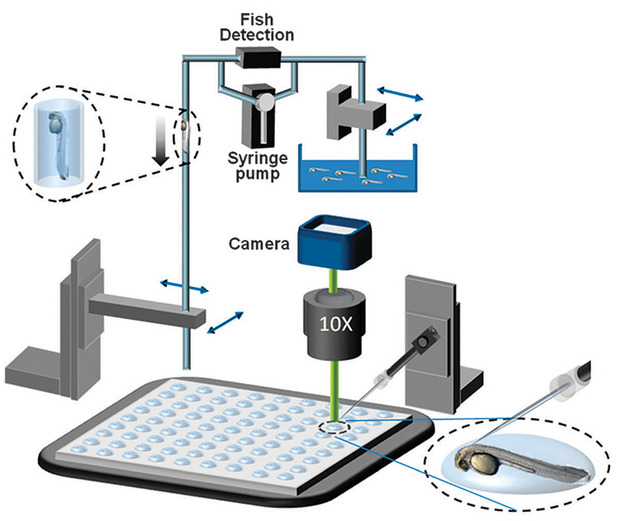Engineers devise rapid drug screen
30 Sep 2014
MIT engineers have devised a novel technology for rapidly testing drug-delivery vehicles in zebrafish.
A team of researchers at the Massachusetts Institute of Technology (MIT) has developed a high-speed drug screen to efficiently test hundreds of different drug-delivery vehicles in living animals.
According to the engineers, the technology will make it easier to discover new methods for delivering a class of drugs known as biologics, which includes antibodies, peptides, RNA, and DNA, to human patients.
In a study appearing in the journal Integrative Biology, the researchers used a high-speed screening process to identify materials that can efficiently deliver RNA to zebrafish and also to rodents.
“Delivery of biologics to diseased tissues is challenging, because they are significantly larger than conventional drugs
Senior author Mehmet Fatih Yanik
The researchers claim this type of rapid test will help alleviate the major issue of safely and effectively delivering treatments based on biologics.
“Biologics is the fastest growing field in biotech, because it gives you the ability to do highly predictive designs with unique targeting capabilities,” said senior author Mehmet Fatih Yanik, an associate professor of electrical engineering and computer science and biological engineering.
“However, delivery of biologics to diseased tissues is challenging, because they are significantly larger and more complex than conventional drugs.”
To help overcome this issue, the researchers used zebrafish as their larvae are transparent, making it easier to see the effects of genetic mutations or drugs.
As part of its study, Yanik’s team injected the zebrafish with RNA carried by nanoparticles called lipidoids. They then tested roughly 100 lipidoids that had not performed well in tests of RNA delivery in cells grown in a lab dish.
The team designed each lipidoid to individually carry RNA-expressing a fluorescent protein, allowing them to more easily track RNA delivery, and injected the lipidoids into the spinal fluid of the zebrafish.
Once injected, the research team investigated which lipidoids efficiently delivered RNA in zebrafish models.
According to researchers, the correlation between performance in rats and in zebrafish was 97%, suggesting that zebrafish are a good model for predicting drug-delivery success in mammals.
“The ability to identify useful drug delivery nanoparticles using this miniaturised system holds great potential for accelerating our discovery process,” said Daniel Anderson, study co-author.
Looking ahead, Yanik’s team is attempting to use its technology to find delivery vehicles that can carry biologics across the blood-brain barrier.





